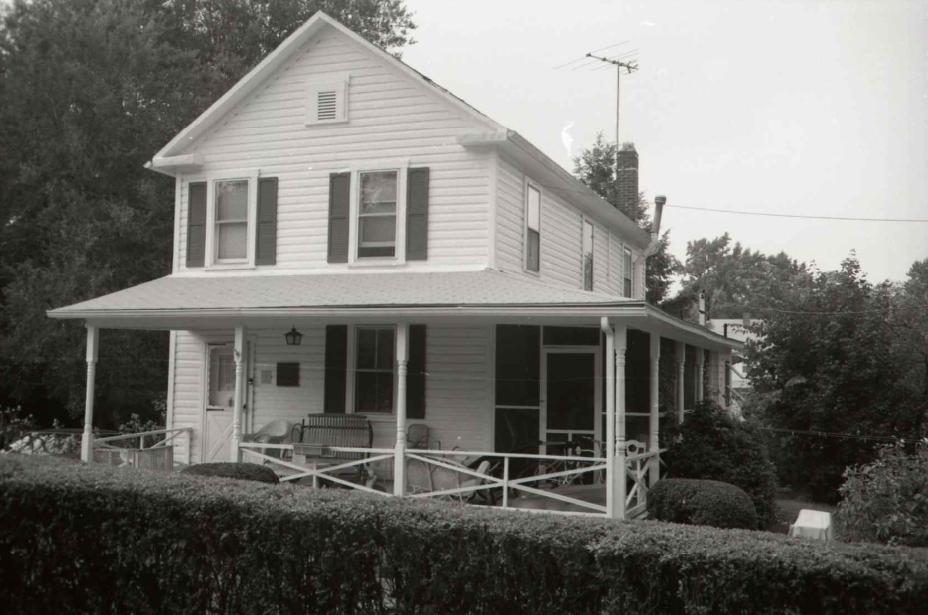Charles Drew House

Dr. Charles Drew, who pioneered blood banking during the 1920s to 1940s, lived in a modest two-story frame house in North Arlington.
Dr. Charles Drew pioneered blood banking from the 1920s to 1940s and lived in a modest two-story frame house in North Arlington. He was also the first African American to receive a Doctorate of Science in Medicine. As Chief of Surgery at Freedmen's Hospital (now Howard University Hospital), Drew passed on crucial training to a new generation of black surgeons, many of whom would continue integrating hospital workforces nationwide. He also opposed the American Red Cross’ policy of segregated blood banks. Located just outside of Washington, DC, the Drew family home in Arlington, Virginia, was the physician’s home base during his formative years of study from 1920 to 1939.
Drew was born to educated, middle-class parents at Freedmen’s Hospital in 1904. In response to strict segregation laws and social practices, black Washingtonians had developed strong cultural and intellectual centers. In his early years in DC, Drew took advantage of the institutions developed by blacks, including hikes and picnics organized by the Twelfth Street YMCA. He also attended Paul Laurence Dunbar High School, a nationally recognized black high school. Drew was involved in programs at Nineteenth Street Baptist Church outside of academia. Drew also excelled in sports. He had developed high self-confidence and determination.
Drew spent 18 years training to become a surgeon. After graduating from high school in 1922, Drew continued to college. He began at Amherst College in Massachusetts. Even in the North, Drew experienced institutionalized racism. He could not become the football team captain because of his skin color.
After graduating in 1926, Drew briefly taught biology and chemistry at Morgan State College in Baltimore, MD. Two years later, he moved to Canada to attend McGill Medical School. Here, he first learned about blood transfusions as a way to treat patients in shock. Drew graduated from McGill and began to teach at Howard University in 1935. Yet three years later, he relocated to Columbia University in 1938 to earn his doctorate. While in New York, Drew met and married his wife, Lenore Robbins. They had four children together.
At Columbia, Drew chose to specialize in blood plasma and transfusions. Along with another student, he developed an experimental blood bank. This project became the basis of his dissertation, “Banked Blood: A Study in Blood Preservation.” Throughout his education, Drew received scholarships, without which he could not have paid his McGill tuition.
In 1940, Drew completed his PhD and returned to Freedmen's Hospital as a certified surgeon. He wished to settle down after his years of constant transition. However, the outbreak of World War II changed his plans. In September 1940, he moved back to New York to direct the Blood for Britain project. Already engaged in warfare, Britain needed portable blood. The initiative successfully delivered usable blood to those in need of emergency transfusions. In early 1941, Drew became the assistant director of the first American Red Cross blood bank. In April, now a certified diplomat of the American Board of Surgery, Drew returned to Freedmen’s Hospital as Head of Surgery.
In October 1941, the Red Cross announced it would not take blood from black donors. In theory, Drew could not donate blood to the program he helped form. Amidst protest from the NAACP, the Red Cross amended its policy. Instead, it would segregate black and white blood banks. Drew voiced his disapproval of the policy in letters to friends, family, and officials. He argued that no scientific evidence proved a difference in black and white blood. In 1943, Drew publicly spoke out against blood segregation. The American Red Cross did not change their policies until 1950.
Up until he died in 1950, Drew called for medical schools to end their exclusion of black students. At his institution, Drew transformed the surgical department and training program. He provided modernized medical services to black citizens. On April 1, 1950, Drew died in a car accident on his way to a medical conference in Tuskegee, Alabama. Hundreds attended his funeral in Washington, DC. His family buried him in Lincoln Cemetery in Maryland.
The Drew House in Arlington is a monument to Drew's achievements in education and science. Especially, Dr. Drew's foundational research on plasma and blood banking helped modernize medicine and saved thousands of lives during World War II and later conflicts.
Images




